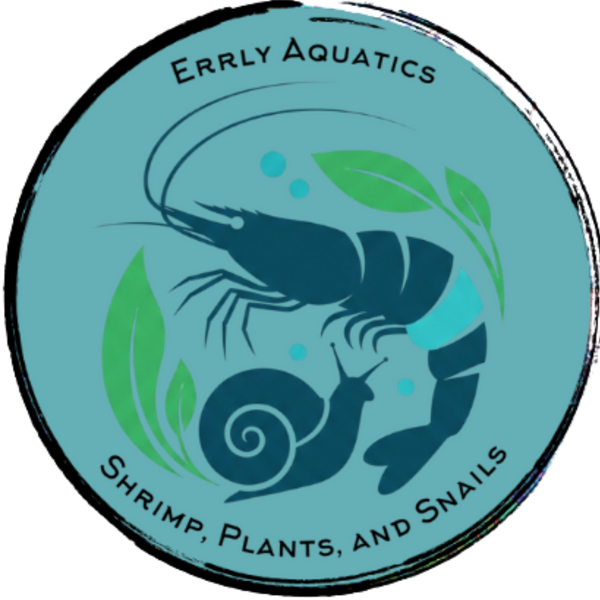
How to Cycle Your Tank
Share
The essential guide to creating a safe, healthy home for your aquatic life.
Why Cycling Matters
Before introducing your shrimp, it’s crucial to start with a properly cycled aquarium. A new tank might look ready—crystal-clear water and running equipment—but it’s missing one thing: a balanced ecosystem of beneficial bacteria.
“Cycling” is the process of establishing bacteria colonies that convert toxic ammonia and nitrite into less harmful nitrate, keeping your water stable and safe for shrimp to thrive. Without cycling, ammonia and nitrite levels can spike, stressing or even killing livestock.
With a well-established tank and stable conditions, your Neocaridina shrimp are set for success.
The Nitrogen Cycle Explained
- Ammonia (NH₃): From waste, uneaten food, and decay; highly toxic.
- Nitrite (NO₂⁻): First bacteria convert ammonia into nitrite; still toxic.
- Nitrate (NO₃⁻): A second bacteria group converts nitrite into nitrate; lower levels are generally safe and removed via water changes.
Goal: Establish robust colonies of both bacteria types so ammonia and nitrite stay at zero.

What You’ll Need
Equipment
- Aquarium & stand
- Filter (sponge, hang-on-back, or canister)
- Heater (for tropical setups)
- Substrate (gravel, sand, or plant soil)
- Water conditioner (to remove chlorine/chloramine)
- Liquid test kit (more accurate than strips)
- Thermometer
Optional but Helpful
- Aquarium-safe decorations & plants
- Bottled beneficial bacteria starter
- Small air pump and airstone
Two Cycling Methods
1) Fishless Cycling (Recommended)
- No animals in the tank during cycling.
- Feed the bacteria using bottled ammonia or decaying fish food.
- Safest method—no risk to live animals.
2) Fish-In Cycling (Not Recommended for Beginners)
- Live animals are present during cycling; requires daily testing and frequent water changes.
- Not ideal for beginners or delicate species like shrimp.
Fishless Cycle: Step-by-Step
Step 1 — Set Up Your Tank
- Rinse substrate in dechlorinated water; wipe decorations.
- Arrange layout and add live plants if desired.
- Fill with dechlorinated water (conditioner removes chlorine/chloramine).
- Install filter and heater; set 75–80°F (24–27°C) for faster bacteria growth.
- Run everything for a few hours to confirm no leaks or malfunctions.
Step 2 — Add Ammonia
Use pure, unscented household ammonia (no dyes/surfactants/fragrances) or a pinch of fish food to decompose.
- Target: Raise ammonia to 2–4 ppm (use an online calculator for dosing).
- Why: Ammonia “feeds” the first bacteria group that converts it into nitrite.
Step 3 — Monitor Progress
- Test ammonia, nitrite, and nitrate every 2–3 days with a liquid kit.
- Expect phases: ammonia rises → ammonia drops & nitrite rises → nitrite drops & nitrate appears.
- Average cycle time: 4–8 weeks (2–3 weeks possible with bottled bacteria).
Step 4 — Keep Feeding the Cycle
- When nitrite falls below ~1 ppm, dose ammonia back to 2–4 ppm.
- Stable temperature and oxygenation speed things up (consider an airstone).
- Ready to move on when: The tank can process 2–4 ppm ammonia to 0 ammonia and 0 nitrite within 24 hours.
Step 5 — Final Prep
- Do a 50–70% water change to bring nitrates down (ideally < 20 ppm).
- Re-test to confirm ammonia and nitrite remain at zero.
- Your tank now has a healthy bacterial foundation—add livestock slowly.
Adding Your First Creatures
Tip 1 — Add Livestock Slowly
Start with a small group, then wait 1–2 weeks before adding more so bacteria can adjust. Example: 5–10 shrimp in a shrimp-only setup.
Tip 2 — Test Daily for the First Week
Monitor ammonia and nitrite closely. If either rises above ~0.25 ppm, perform a 25–50% water change.
Tip 3 — Avoid Overfeeding
Feed only what can be consumed quickly (for shrimp: a tiny portion finished within 2–3 hours). Remove uneaten food to prevent mini-cycles.

Common Mistakes to Avoid
Mistake 1 — Adding Livestock Before the Cycle Is Complete
Always confirm ammonia = 0 and nitrite = 0 for several days before adding animals.
Mistake 2 — Using Untreated Tap Water
Chlorine/chloramine can stall or reset your cycle. Always use a conditioner.
Mistake 3 — Over-Cleaning Filter Media
Rinse media gently in a bucket of tank water—never under tap water.
Mistake 4 — Skipping Water Testing
Progress isn’t visible; rely on a liquid test kit during cycling and weekly afterward.
Mistake 5 — Rushing the Process
Most cycles take 4–8 weeks. Patience now prevents problems later.
Troubleshooting
Problem 1 — Ammonia or Nitrite Won’t Drop
- Add a bottled bacterial starter.
- Keep water 75–80°F (24–27°C).
- Avoid replacing or tap-rinsing filter media.
Problem 2 — pH Is Crashing
- Low KH reduces buffering. Add crushed coral, aragonite, or a commercial buffer.
- Partial water changes with higher KH tap water can help.
- Test KH regularly to maintain stability.
Problem 3 — Cycle Taking Too Long
- Maintain ammonia at 2–4 ppm.
- Raise temperature slightly (~78°F).
- Ensure good oxygenation and filter performance; consider an airstone.
Closing Thoughts
Cycling builds the invisible life-support system that keeps aquatic pets healthy for years. By patiently establishing beneficial bacteria, you create a stable environment free from dangerous ammonia and nitrite spikes. A properly cycled tank is the foundation of long-term success.
